#mobile-station
Text

AMKZ_0120
#vocaloid#hatsune miku#kasane teto#akita neru#triple baka#once again cast station just mobilizes a ton of artists to draw the girls in cast's latest outfits for them
1K notes
·
View notes
Text



Danganronpa billboards I spotted in Akihabara today!!
#danganronpa#You do not know the SOUND I made when I spotted the first one#It's been a small fantasy of mine since I got here to see a DR poster like this in a station#ISNT IT SO COOL???#I know its just for a collab with some mobile game but it makes me so happy#to know that people still like DR enough that this is a worthwhile investment#And that I just get to see it!#(only thing that would've made it better would have been the v3s. But we take our victories)#shut up me#no id
403 notes
·
View notes
Text
do you ever think about how convenience is accessibility and how like... the path of least resistance creates a world which could be so different if only a few points of convenience were changed. like imagine if we didn't have gas stations. imagine if people had to buy gas in cans at stores that were only open sometimes etc
you know???? WOW THAT WOULD SUCK AND BE INCONVENIENT AND MAKE DRIVING A CAR A LOT HARDER
many such fucking cases but no one ever thinks about it bc that's Just How Things Are but. like. they could be different!
like every single person has Abilities and a Natural Limitation of Those. as humans we are not able to go 60mph down the highway without the aid of, CAR. which is a way to overcome the limitations of Humans Can't Travel That Fast Ourselves!
#tbis post is not anti gas station or anti car. in case anyone is going to misread it and get mad at me#it's just an example.#like just. cars is a normalized mobility device#you know?#everyone has Abilities and the Limits Thereof#you cant go 60mph without a car.#as a human being. thats a limitation#which one overcomes. with the aid of CAR!
204 notes
·
View notes
Text
i think it's so fucked up i bought a gamer laptop in hopes of it being pretty sturdy only for it to kaput on me in two years LMFAO
#i rmmbr when electronics would last me 8+ yrs...#either that or me as a child just didn't particularly notice what a slowly decaying computer was like LMAO#TBF i should just invest in a desktop now but i had no choice back then cos i needed a mobile work station :pensive:#i also now understand why ppl have sole computers dedicated to just doing One Thing now. but that's a Luxury LOL#crazy to me to even own one computer#tbd maybe
65 notes
·
View notes
Text










10 of the 13 wallpapers you get for completing palettes in Splatoon 3 Side Order
#side order#side order spoilers#marina ida#pearl houzuki#dedf1sh#acht splatoon#the three i left out was a pattern of all the weapons/pearl’s palette with all color chips/spire of order they used for the order sector-#thumbnail at the train station#i hope this formats correctly i’m posting this through mobile#splat3#splatoon
161 notes
·
View notes
Text
New station ads for Phantom Parade are up in Shinjuku!
Finding it was a colossal pain in the ass because Shinjuku station sucks. It’s massive and maze-like, but I had to find my boys.










After I walked through this hallway, I shuffled off to the Breakup KFC. It was a day of anime pilgrimages.
#jen の diary#jjk#jujutsu kaisen#geto suguru#gojo satoru#shoko ieiri#nanami kento#toji fushiguro#yu haibara#phantom parade#jjk phantom parade#jjk mobile game#gacha#gacha games#shinjuku station
109 notes
·
View notes
Photo
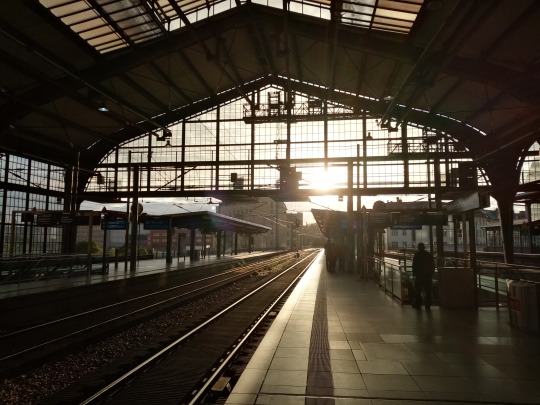
#i miss berlin right now#berlin#berlin friedrichstraße#bahnhof#railway station#train station#friedrichstraße#bahnhof berlin friedrichstraße#sun#sunset#sundown#light#licht#der sonne entgegen#fotografie#photography#lensblr#fotoblr#taken with my shitty mobile phone#what feels like ages ago
341 notes
·
View notes
Text

Pete's Service
The Continental Divide series
Hasselblad 500c/m
Kodak Tmax 400iso
#Pete's Service#Continental Divide#wyoming#gas#gas station#road trip#on the road#travel#americana#Lincoln highway#road#highway#Mobil pegasus#photo#photography#abandoned#film#kodak#abandoned buildings#photographers on tumblr#original photographers#photographerslife#hasselblad#film is not dead#gas pump#vintage#vintage gas station#William Mark Sommer
48 notes
·
View notes
Text



Saved by the wardrobe warriors
@tmnt-fandom-family-reunion @irequirealobotomy
Cabin #7 (7Wonders of the Turtleverse)
#love seeing those mobile cosplay clean up stations#those people are so cool#saved the day by sewing skills and backup outfits#tmnt fandom family reunion#tmnt#my art#rottmnt#tmnt dragons#tmnt spitfire#tmnt crossover#cabin 7 wonders of the turtleverse#cabin 7#ask box#ask answers
39 notes
·
View notes
Text
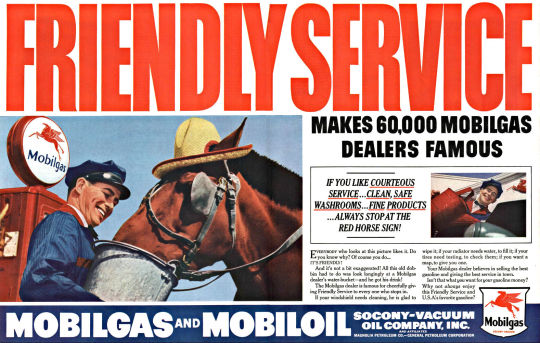
Socony-Vacuum Oil Company Inc, 1938
#Mobilgas#ad#1938#vintage#Mobiloil#advertisement#1930s#friendly service#Mobil gasoline#service stations#red horse#pegasus#advertising#gas pump
57 notes
·
View notes
Photo

Photographer Marco Franchina
#photography#marco franchina#mobil#cars#night photography#gas stations#cinematic#street photography#new topographics
296 notes
·
View notes
Text

Cinque Terre, Italy
#phoneography#mobiele telefoon fotografie#mobile phone photography#smartphoneography#smartphone fotografie#smartphone photography#travel#travel photography#reizen#reisfotografie#reisen#voyage#viajar#railway#railways#spoor#Bahn#track#train#trein#treno#tren#Zug#station#stazione#Bahnhof#estacion#Trenitalia#Europe#Europa
15 notes
·
View notes
Text








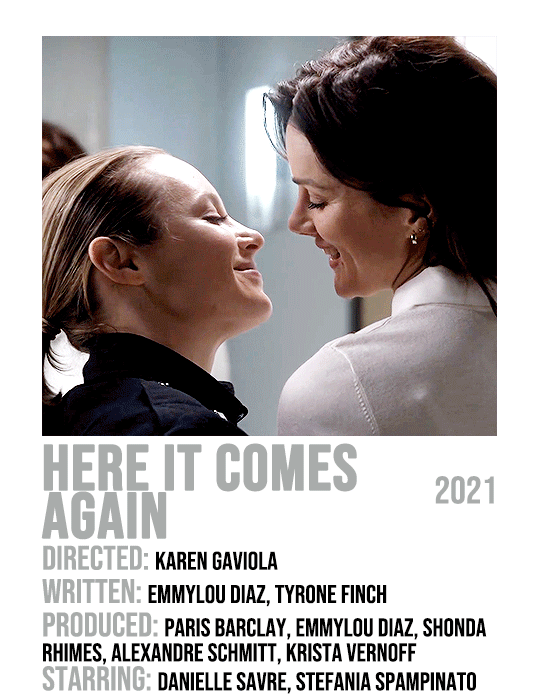



Season 4 Marina posters
{insp. / layout}
#station 19#station19edit#carina deluca#maya bishop#carina x maya#mine#take two lol#this gif set gave me so much trouble between deleting it first accidentally and then the first gif wasn't showing up right on mobile -_-#but finally got it done#i forget that carina ended up missing a quarter of this season until i went through them all#but it's still the superior season...so much good <3#marina posters
101 notes
·
View notes
Text
to the man that started it all:
thank you for being there for me in the rough times. thank you for always being my shoulder to cry on, the music to get me through the late nights, for being sometimes the only reason to make it through into the next day.
i don’t think Adam Young really has any idea how much he’s done for me - thank you for keeping the whimsy alive in this harsh world. thank you for the inspirational lyrics to keep me going. thank you fo helping me process emotions like grief, anger, sadness, anxiety…
12/13 year old keri lu really had no idea what was in store.
16-19 year old keri lu thought it was the end for a while.
26 year old keri lu is thankful that there was a light in the darkest of times.
thank you, adam. you mean the world to me.
#owl city#Adam young#to the moon#to the moon deluxe tour#fireflies#coco moon#mobile orchestra#cinematic#all things bright and beautiful#the midsummer station#of June#maybe I’m dreaming#ocean eyes
40 notes
·
View notes
Photo
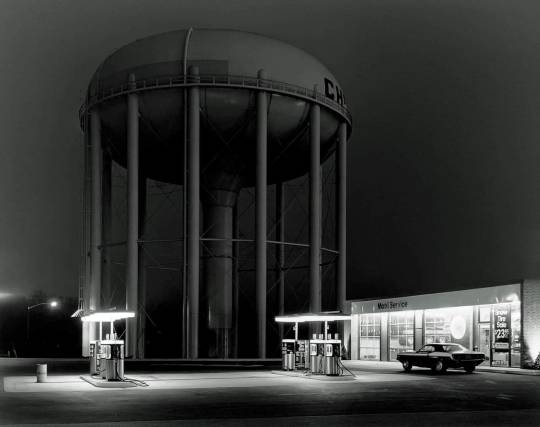
George Tice. Petit's Mobil Station and Watertower, Cherry Hill, New Jersey. 1974
#BW#Black and White#Preto e Branco#Noir et Blanc#黒と白#Schwarzweiß#retro#vintage#George Tice#Mobil Station#Watertower#Cherry Hill#New Jersey#NJ#1974#1970s#70s#architecture#night
456 notes
·
View notes
Text
Gas Station Stream of Consciousness Post
Gas Stations as Liminal Spaces
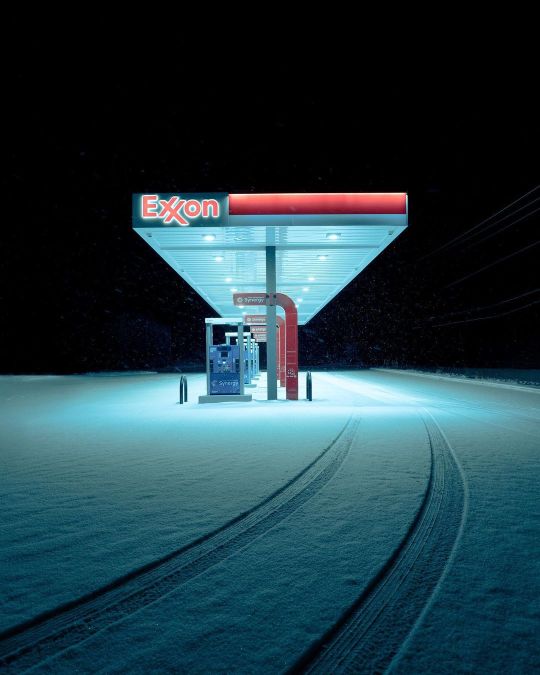
I've had quite a few hyperfixations in my day - ATMs, laundry detergents, credit cards - so my current one pertaining to gas stations is fitting considering my affinity for liminal spaces and the dedication of this blog to them. Liminal spaces are transitory in nature, hence their portrayal in online circles through photos of carpeted hallways, illuminated stairwells, dark roads, and backrooms, among other transitional points.

Gas stations are posted online as well; images of their fuel pumps or neon signage photographed through a rainy car window communicate their liminality and the universal experiences they provide to all of society. Perhaps they are the ultimate specimen of a liminal space. The machines they are created for, automobiles and tractor trailers alike, themselves are tools for motion, vestibules that enable travel and shipment across long distances at high speeds. Cars and roads are liminal spaces, albeit in different formats, and gas stations serve as their lighthouses. Vehicles at filling stations, therefore, are in a sense liminal spaces within liminal spaces within liminal spaces.
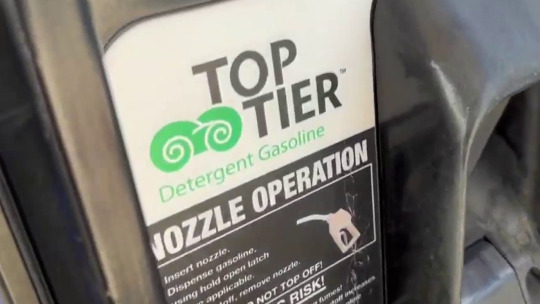
The uniqueness of a gas station as a liminal space, however, is its intersection with the economics and aesthetics of capitalism. Gasoline (and diesel fuel) is a commodity, downstream from crude oil, merely differentiated by octane ratings. Some argue that minute distinctions between agents, detergents, and additives make some brands better than others. Indeed, fuels that are approved by the Top Tier program, sponsored by automakers, have been shown to improve engine cleanliness and performance, but this classification does not prefer specific refiners over others; it is simply a standard. To a consumer, Top Tier fuels are themselves still interchangeable commodities within the wider gasoline commodity market.
The Economics of Gas Stations

The market that gas stations serve is characterized by inelastic demand, with customers who reckon with prices that fluctuate day in and day out. This is not to say that consumer behavior does not change with fuel prices. It has been observed that as prices rise, consumers are more eager to find the cheapest gas, but when prices fall, drivers are less selective with where they pump and are just happy to fill up at a lower price than last week. In response, gas stations lower their prices at a slower rate than when increasing prices, allowing for higher profit margins when wholesale prices fall. This has been dubbed the "rockets and feathers" phenomenon.

When portrayed as liminal spaces, gas stations are most often depicted at night, places of solitude where one may also enter the adjacent convenience store and encounter a fellow individual who isn't asleep, the modern day lightkeeper. The mart that resides at the backcourt of a gas station is known to sell goods at higher prices than a supermarket, simultaneously taking advantage of a captive customer, convenient location, and making up for the inefficiencies of a smaller operation. It may come as no surprise, then, that gas stations barely make any money from fuel sales and earn their bulk through C-store sales. This is a gripe I have with our economic system. Business is gamified, and in many cases the trade of certain goods and services, called loss leaders, is not an independent operation and is subsidized by the success of another division of a business, a strategy inherently more feasible for larger companies that have greater scale to execute it.
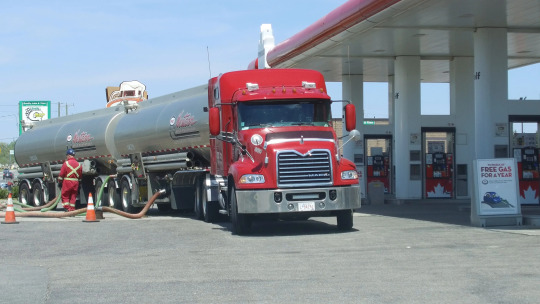
Nevertheless, most gas station owners, whether they have just one or hundreds of sites, find this method fruitful. Even though most gas stations in the US sell one of a handful of national brands, they operate on a branded reseller, or dealer, model, with oil companies themselves generally not taking part in the operations of stations that sell their fuels. The giants do still often have the most leverage and margin in the business, with the ability to set the wholesale price for the distributor, which sells at a markup to the station owner, which in turn will normally make the least profit in the chain when selling to the end customer at the pump. This kind of horizontal integration that involves many parties lacks the synergies and efficiencies of vertical integration that are so applauded by capitalists, but ends up being the most profitable for firms like ExxonMobil, who only extract and refine oil, and on the other end of the chain merely license their recognizable brands to the resellers through purchasing agreements. Furthermore, in recent years, independent dealers have sold their businesses to larger branded resellers, in many cases the ones from whom they had been buying their fuel.
A Word on ExxonMobil's Branding Potential
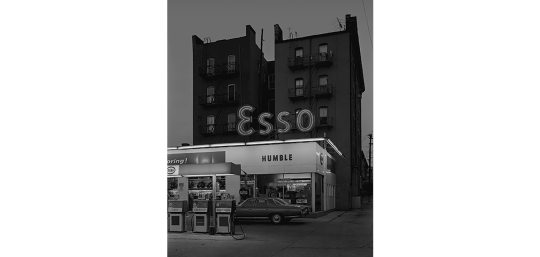
The largest publicly traded oil company in the world is Exxon Mobil Corporation. It is a direct descendent of the Rockefeller monopoly, Standard Oil, which was broken up in 1911 into 34 companies, the largest of which was Jersey Standard, which became Exxon in 1973. This title was generated by a computer as the most appealing replacement name to be used nationwide to unify the Humble, Enco, and Esso brands, decades before AI was spoken of. The latter brand is still used outside of the United States for marketing, arising from the phonetic pronunciation of the initials of Standard Oil. In 1999, Exxon and Mobil merged, and the combined company to this day markets under separate brands. Exxon is more narrowly used, to brand fuel in the United States, while Mobil has remained a motor oil and industrial lubricant brand, as well as a fuel brand in multiple countries.

Mobil originated in 1866 as the Vacuum Oil Company, which first used the current brand name for Mobiloil, and later Mobilgas and Mobilubricant products, with the prefix simply short for "automobile". Over time, Mobil became the corporation's primary identity, with its official name change to Mobil Oil Corporation taking place in 1966. Its updated wordmark with a signature red O was designed by the agency Chermayeff & Geismar, and the company's image for service stations was conceived by architect Eliot Noyes. New gas stations featured distinctive circular canopies over the pumps, and the company's recognizable pegasus logo was prominently on display for motorists.

I take issue with the deyassification of the brand's image over time. As costs were cut and uniformity took over, rectangular canopies were constructed in place of the special ones designed by Noyes that resembled large mushrooms. The pegasus remained a prominent brand icon, but the Mobil wordmark took precedence, which I personally believe to be an error in judgement. This disregard for the pegasus paved the way for its complete erasure in 2016 with the introduction of ExxonMobil's "Synergy" brand for its fuel. The mythical creature is now much smaller and appears only at the top right corner of pumps at Mobil gas stations, if at all.

Even into the 90s and the 21st century the Pegasus had its place in Mobil's marketing. In 1997, the company introduced its Speedpass keytag, which was revolutionary for its time and used RFID technology, akin to mobile payments today, to allow drivers to get gas without entering the store or swiping a card. When a Speedpass would be successfully processed, the pegasus on the gas pump would light up red.

When Exxon and Mobil merged in 1999, the former adopted the payment method too, with Exxon's less iconic tiger in place of the pegasus.

The program was discontinued in 2019 in favor of ExxonMobil's app, which is more secure since it processes payments through the internet rather than at the pump.
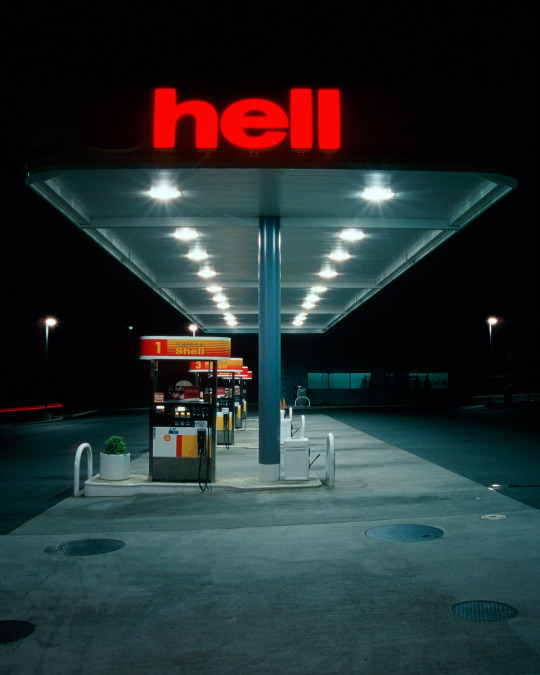
What Shell has done with its brand identity is what Mobil should've done for itself. The European company's logo was designed in 1969 by Raymond Loewy, and is a worth contender for the "And Yet a Trace of the True Self Exists in the False Self" meme. In recent years, Shell went all in on its graphic, while Mobil's pegasus flew away. I choose to believe that the company chose to rebrand its stations in order to prevent the malfunction in the above image from happening.

ExxonMobil should have also discontinued the use of the less storied Exxon brand altogether, and simplifying its consumer-facing identity to just the global Mobil mark. Whatever, neither of the names are actual words. As a bonus, here is a Google map I put together of all 62 gas stations in Springfield, MA. This is my idea of fun. Thanks for reading to the end!
#exxonmobil#exxon#mobil#gas station#gas stations#liminal space#liminal spaces#liminal#liminalcore#liminal aesthetic#justice for pegasus#shell#corporations#capitalism#branding#marketing#standard oil#economics#gas#gasoline#fuel#oil companies
106 notes
·
View notes